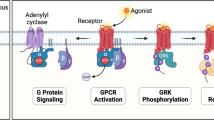Abstract
A novel approach to the search for the new groups of biologically active peptides is developed, which is based on the selection of point mutants with respect to noncritical amino acid residues. Using a gene site encoding the arginine vasopressin AVP(4–5) sequence, which corresponds to the pGlu-Asn-NH2 nootropic dipeptide, three point mutants with respect to Asn (pGlu-Ser-NH2, pGlu-Asp-NH2, and pGlu-His-NH2) have been synthesized. The first two peptides (corresponding to transitions of the 1st and 2nd bases, respectively) display nootropic activity in the passive avoidance test in rats at a dose of 0.1 mg/kg (i.p.). The last peptide (corresponding to a transversion of the 1st base) proved to be inactive. Both active peptides exhibit electronic and structural differences from the parent dipeptide: pGlu-Asp-NH2 bears a negative charge and contains a primary alcohol group instead of the amide moiety. Using the proposed method, it is possible to create genetically related analogs of well-known neuropeptides with substantially different structures.
Similar content being viewed by others
References
T. A. Gudasheva, R. U. Ostrovskaya, S. S. Trofimov, et al., Khim.-Farm. Zh., 19(11), 1322–1324 (1985).
T. A. Gudasheva, R. U. Ostrovskaya, F. V. Maksimova, et al., Khim.-Farm. Zh., 22(3), 271–275 (1988).
T. A. Gudasheva and A. P. Skoldinov, Eksp. Klin. Farmakol., 66(2), 15–19 (2003).
T. A. Gudasheva, G. G. Rozantsev, R. U. Ostrovskaya, et al., Khim.-Farm. Zh., 29(1), 15–18 (1995).
A. Dietrich and J. D. Allen, Behav. Brain Res., 87(2), 195–200 (1997).
Y. Nakayama, Y. Takano, Y. Shimohigashi, et al., Brain Res., 858(2), 416–423 (2000).
A. N. Cherepkova, N. A. Kapai, and V. G. Skrebitskii, Byull. Eksp. Biol. Med., 131(2), 167–169 (2001).
J. P. H. Burbach, G. L. Kovacs, D. DeWied, et al., Science, 221, 1310–1314 (1983).
M. Fujiwara, Y. Ohgami, K. Inada, and K. Iwasaki, Behav. Brain Res., 83(1–2), 91–96 (1997).
E. Sausville, D. Carney and J. Battey, J. Biol. Chem, 260(18), 10236–10241 (1985).
R. Ader, J. A. W. M. Weijnen, and P. Moleman, Psychol. Sci., 26, 125–128 (1972).
A. A. Zamyatin, Special Data Bank EROP-Moscow; http://erop.inbi.ras.tu.
A. P. Smirnova, S. M. Funtova, and V. V. Knyazeva, Khim.-Farm. Zh., 35(8), 32–33 (2001).
N. C. Davis, J. Biol. Chem., 223, 935 (1956).
J. Rivier, W. Vale, R. Burgus, et al., J. Med. Chem., 16(5), 545–549 (1973).
Author information
Authors and Affiliations
Additional information
__________
Translated from Khimiko-Farmatsevticheskii Zhurnal, Vol. 40, No. 1, pp. 18–22, January, 2006.
Rights and permissions
About this article
Cite this article
Gudasheva, T.A., Trofimov, S.S., Morozova, A.A. et al. Designing nootropic dipeptides using an evolutionary-genetic approach. Pharm Chem J 40, 18–22 (2006). https://doi.org/10.1007/s11094-006-0049-z
Received:
Issue Date:
DOI: https://doi.org/10.1007/s11094-006-0049-z




